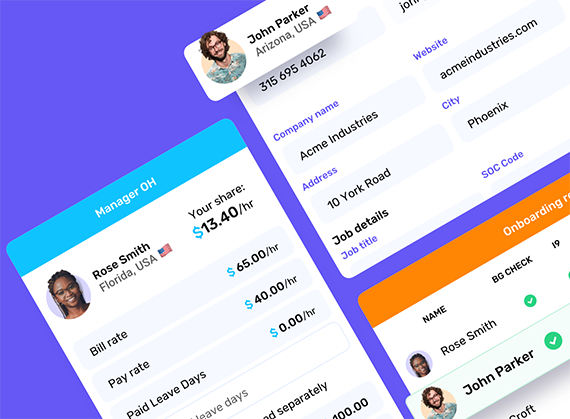Creating a job description that attracts top talent and sets clear expectations is crucial for any organization. This is especially true for Talent Acquisition Teams and staffing firms. A well-crafted job description not only helps you find the right candidate but also sets the foundation for their success in their role and in the company. Here’s a guide on how to build the best job descriptions:
Steps to Write the Best Job Descriptions
1. Start with a Clear Job Title
The job title is the first thing a potential candidate will see. It should be concise, specific, and reflective of the role’s responsibilities. Avoid jargon or overly creative titles that might confuse applicants. Instead, opt for industry-standard titles that accurately describe the position.
2. Provide a Compelling Summary
Begin with a brief overview of the role. This should capture the essence of the job and why it’s important to your organization. Highlight how the position contributes to the company’s mission and goals. An engaging summary can entice candidates to read further and consider applying.
3. Detail Key Responsibilities
Clearly outline the main duties and responsibilities of the role. Use bullet points for easy reading and ensure each point is specific and action-oriented. This section should give candidates a clear understanding of what their day-to-day activities will involve. Be sure to prioritize the most critical tasks.
4. Specify Required Qualifications
List the necessary qualifications, including education, experience, skills, and certifications. Differentiate between “must-have” and “nice-to-have” qualifications. This helps in filtering out unqualified candidates while encouraging those who meet the essential criteria to apply.
5. Highlight Opportunities for Growth
Top talent looks for positions that offer growth and development opportunities. Mention any potential career paths, training programs, or professional development opportunities associated with the role. This can make your job description more attractive to ambitious candidates.
6. Include Company Culture and Values
A job description is also a chance to showcase your company culture and values. Provide a glimpse into what it’s like to work at your organization. Mention your company’s mission, core values, and any unique perks or benefits. This helps candidates assess if they would be a good cultural fit.
7. Be Transparent About Compensation and Benefits
Whenever possible, include information about salary range and benefits. Transparency in compensation can build trust and attract candidates who are comfortable with the offered range. Highlight unique benefits such as flexible working hours, health insurance, or professional development funds. This is especially true if you plan to use an Employer of Record (EOR) platform to employ the worker.
8. Use Inclusive Language
Ensure that your job description is free from biased language and encourages a diverse range of candidates to apply. Avoid gender-specific terms and be mindful of how different phrases might be perceived. Use inclusive language to foster an environment of equality and diversity.
9. End with a Strong Call to Action
Encourage candidates to apply by providing clear instructions on how to do so. Mention the documents required (e.g., resume, cover letter) and the application process. Make it easy for candidates to understand the next steps and feel motivated to take action.
10. Review and Revise
Finally, review your job description for clarity and accuracy. Seek feedback from current employees or hiring managers to ensure it accurately reflects the role and company culture. Regularly update job descriptions to keep them relevant and aligned with your evolving business needs.
Conclusion
Building the best job descriptions is an art that requires attention to detail, clarity, and a focus on attracting the right talent. By following these steps, you can create job descriptions that not only attract top candidates but also set the stage for their success within your organization. Remember, a well-crafted job description is the first step in finding and retaining the best talent.





